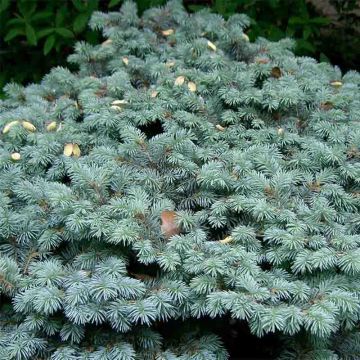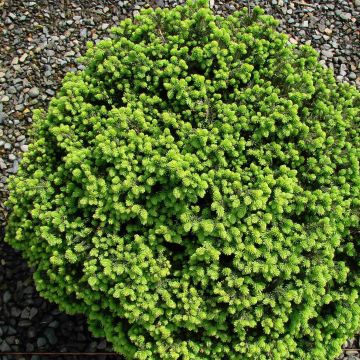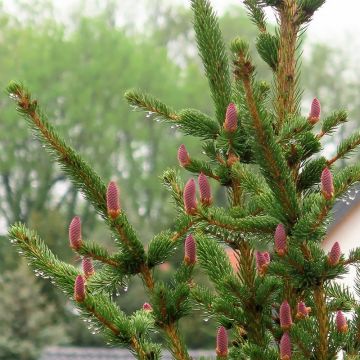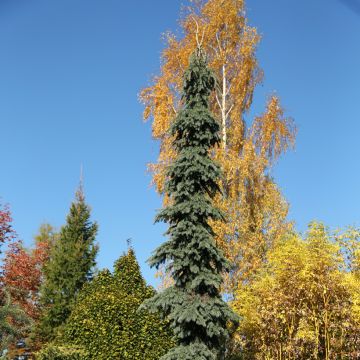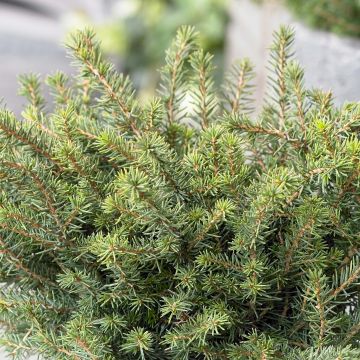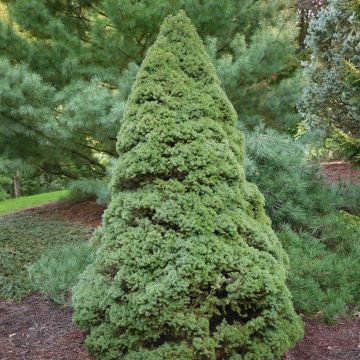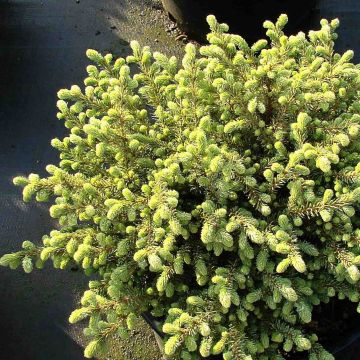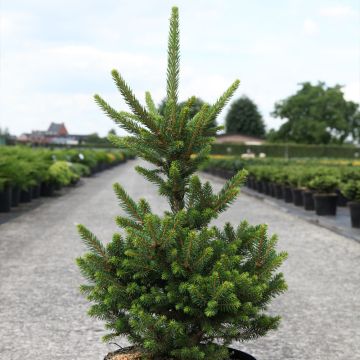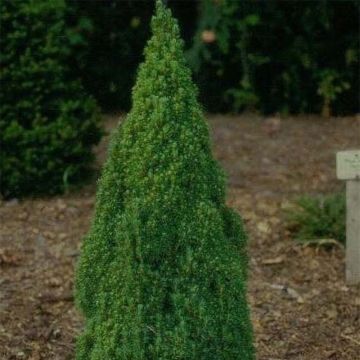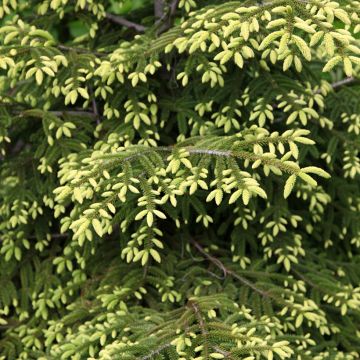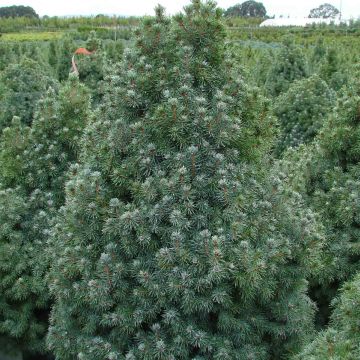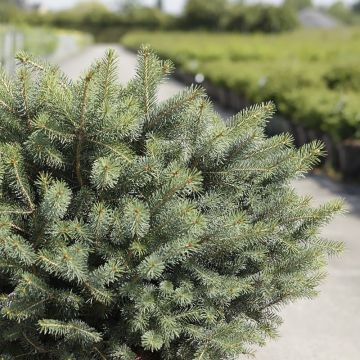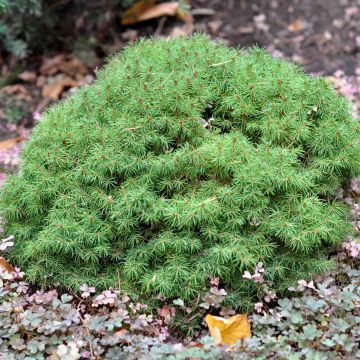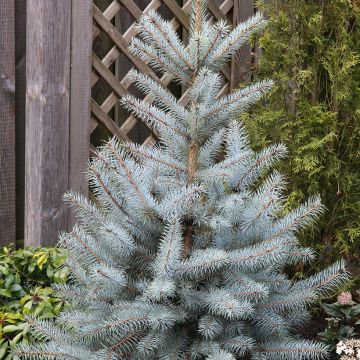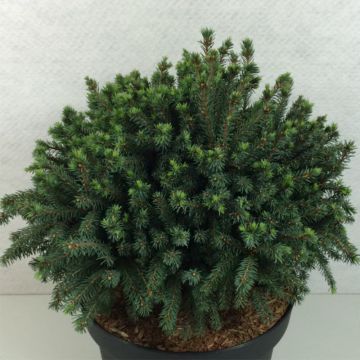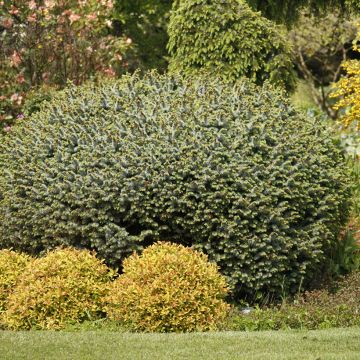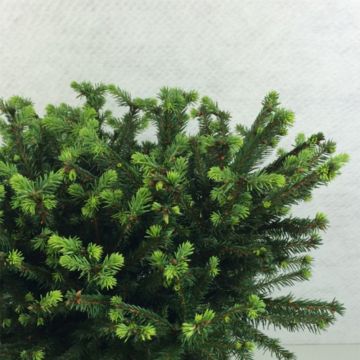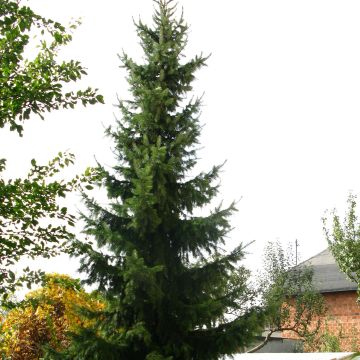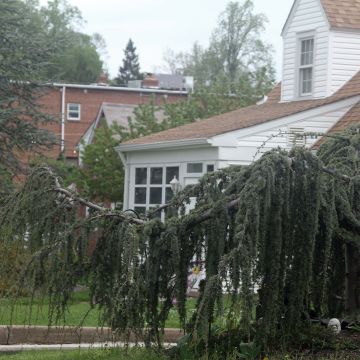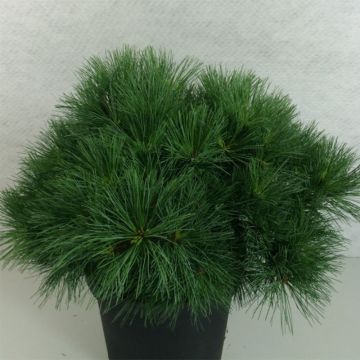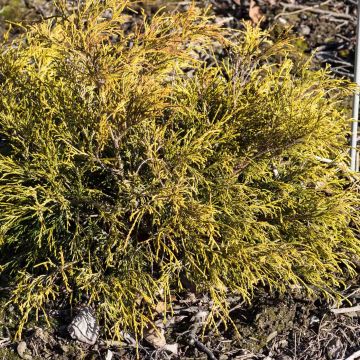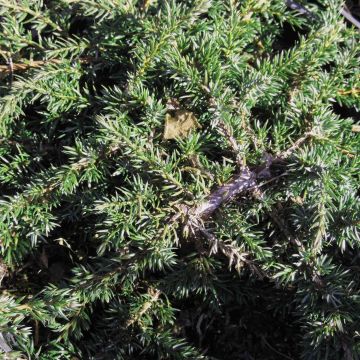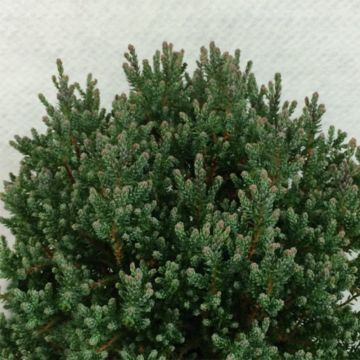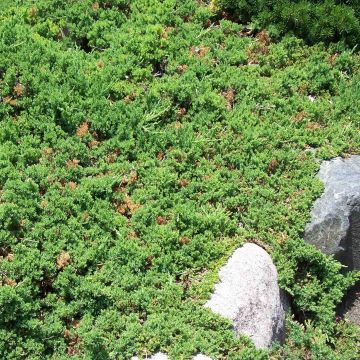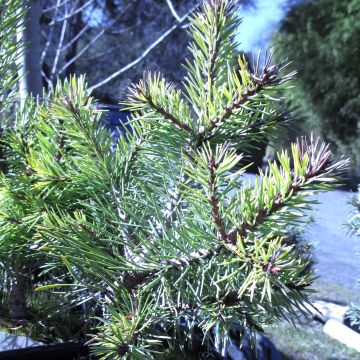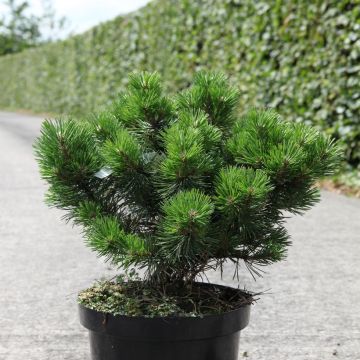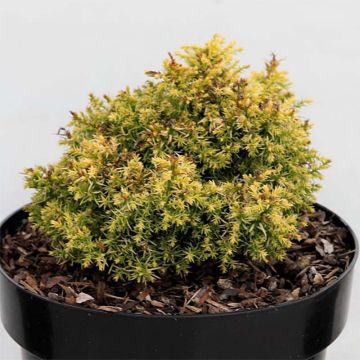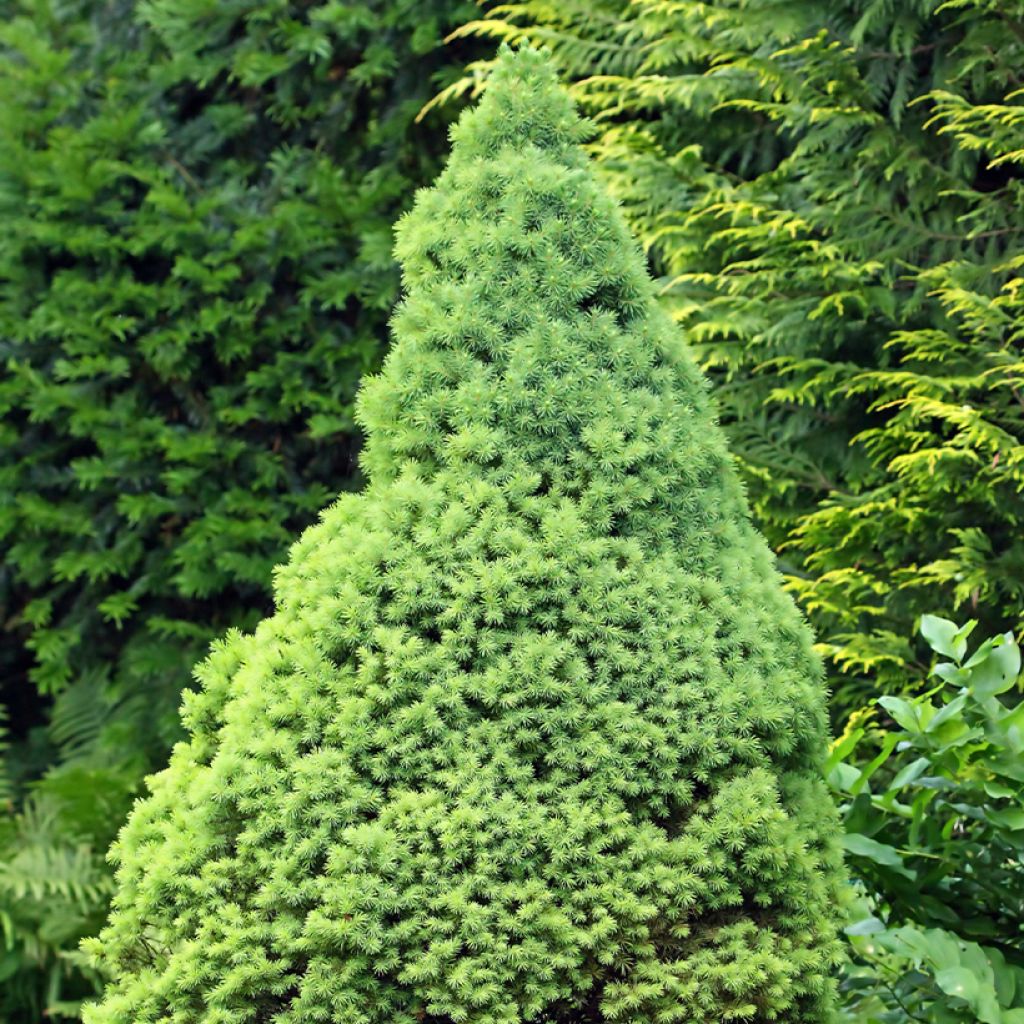

Picea glauca Zuckerhut
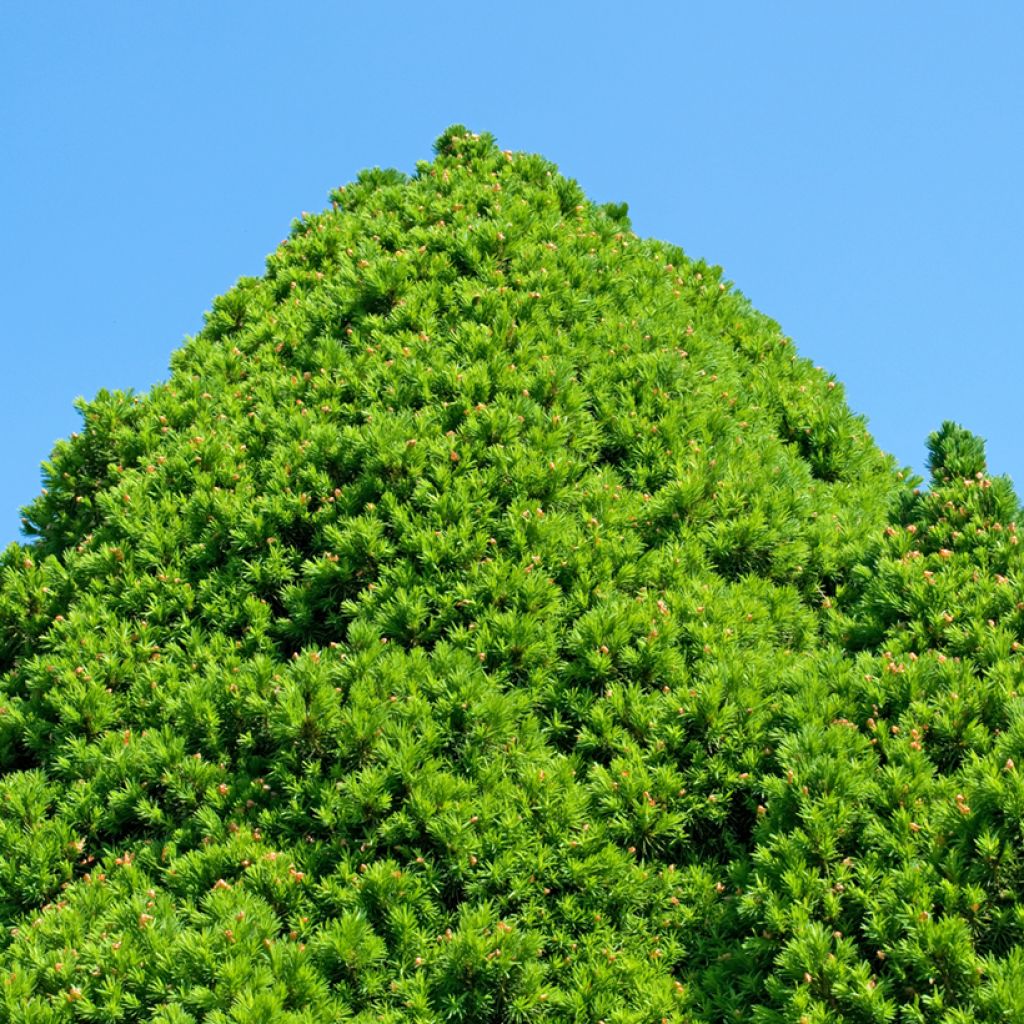

Picea glauca Zuckerhut
Picea glauca Zuckerhut
Picea glauca Zuckerhut
White Spruce, Canadian Spruce, Skunk Spruce, Cat Spruce, Black Hills Spruce, Western White Spruce, Alberta White Spruce, Porsild Spruce
Why not try an alternative variety in stock?
View all →This plant carries a 24 months recovery warranty
More information
We guarantee the quality of our plants for a full growing cycle, and will replace at our expense any plant that fails to recover under normal climatic and planting conditions.
From €5.90 for pickup delivery and €6.90 for home delivery
Express home delivery from €8.90.
From €5.90 for pickup delivery and €6.90 for home delivery
Express home delivery from €8.90.
Does this plant fit my garden?
Set up your Plantfit profile →
Description
The Picea glauca 'Zuckerhut' is a dwarf variety of white spruce that naturally forms a very graphic cone. Its foliage, which is very dense and composed of short, upright needles, evolves throughout the season, starting with a very tender green in spring and then adopting a darker colour in summer. With very slow growth, this conifer proves to be an excellent subject for rock gardens, provided that the soil is not too dry. It appreciates the sun and a soil that is neutral or slightly acidic.
The Picea glauca, which is also known as White Spruce, White Spruce or Glaucous Spruce, is an evergreen conifer belonging to the Pinaceae family, native to Canada. In its natural environment, it grows slowly, has a fairly variable habit depending on its habitat, but usually conical or pyramid-shaped with a broad base. This tree can reach a height of 25m (82 ft). This species is traditionally used for paper production. It can live for many years (200 years or more).
The variety 'Zuckerhut', derived from this species, is a relatively recent German selection (end of the 1980s) from a nursery in the Pinneberg region, in Schleswig-Holstein. This area north of Hamburg is home to one of the largest concentrations of nurseries in Europe, and the climate and soils there are particularly suitable for growing conifers. It is a dwarf form with particularly slow growth, about 5cm (2 in) per year. Its German name, which means "sugar loaf," aptly evokes its almost perfect cone-shaped design. In 10 years, it will only reach a height of 1m (3 ft 4 in) and will peak at 1.50m (4 ft 11 in) at maturity, with a width of 60 to 70cm (23.6 to 27.6 in). In spring, the emergence of its young tender green shoots is a charming sight. They then darken during the summer, with the shrub forming a very dense and aesthetically pleasing mass of vegetation.
The root system of white spruces is shallow, highly branched, and trailing, making them difficult to transplant when they are mature, and quite sensitive to wind. On the other hand, this species is absolutely not sensitive to cold, able to withstand temperatures as low as -35°C and below.
The 'Zuckerhut' White Spruce, with its slow growth and limited development, is a perfect subject for rock gardens. This plant with a pronounced conical habit goes well with large stones, geometric lines, and masonry structures. It can be paired with dwarf globular or creeping conifers and/or colourful ones. The Pinus mugo mughus with its long needles and trailing habit will be a good companion, as well as the Pinus strobus Minima with its fine yellow-green needles, which are quite different from those of our dwarf White Spruce. The Thujopsis dolobrata Solar Flare, which forms a yellow cushion with foliage resembling certain ferns, will create a well-contrasted light spot when planted in front of 'Zuckerhut'. The true graphic qualities of conifers naturally emerge in the design of a contemporary garden, which prioritizes the aesthetics of shapes, silhouettes, and textures over the dance of flowering. These plants, with their reassuring permanence, structurally shape a bed, mark pathways, and border terraces. They go well with heathers or ground cover plants such as aubrietas, Cerastium, shrubby salvias, as well as flowering shrubs. The key is to play with volumes and colours.
Report an error about the product description
Picea glauca Zuckerhut in pictures
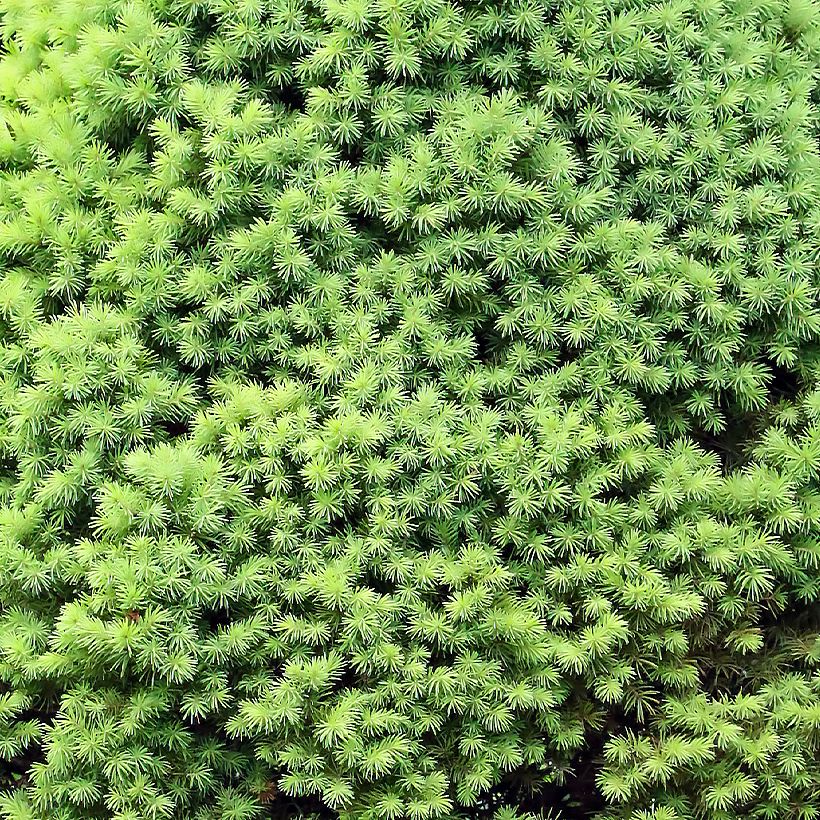

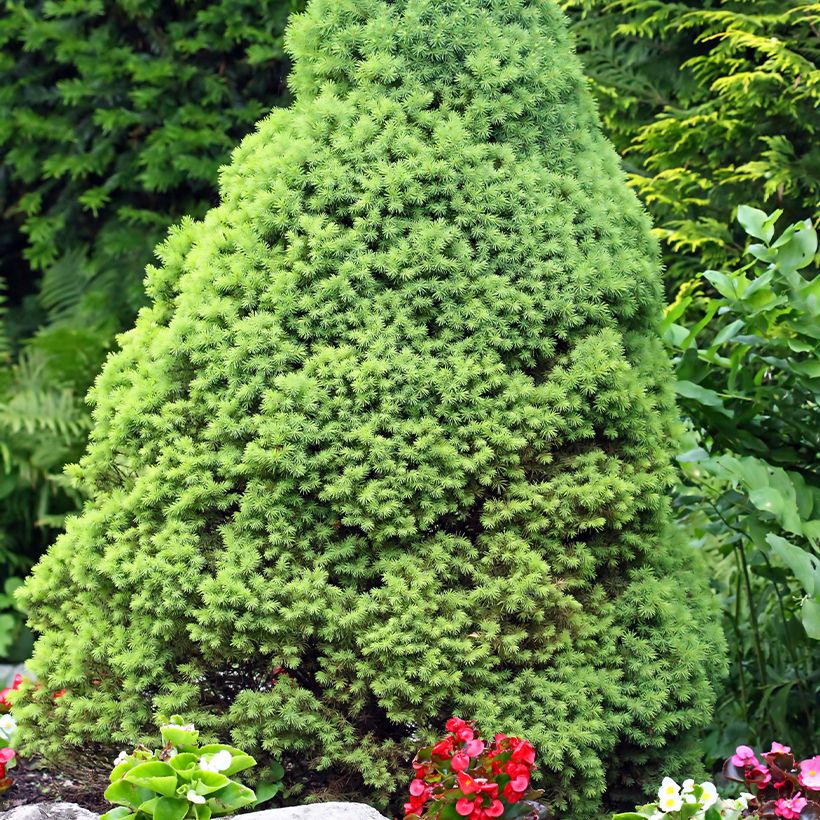

Plant habit
Foliage
Botanical data
Picea
glauca
Zuckerhut
Pinaceae
White Spruce, Canadian Spruce, Skunk Spruce, Cat Spruce, Black Hills Spruce, Western White Spruce, Alberta White Spruce, Porsild Spruce
Cultivar or hybrid
Other Picea
Planting and care
The Picea glauca 'Zuckerhut' should be planted from September to November and from February to April in deep, well-drained, light, preferably neutral or slightly acidic, occasionally dry to moist soil. A sandy or rocky soil that is not too chalky will also be suitable. Choose a sunny location sheltered from prevailing winds. In overly sunny and dry conditions, it will be more susceptible to attacks from red spider mites.
Soak the root ball in a bucket of water for 15-20 minutes before planting. Add organic amendment during planting and water generously in the first few years and during prolonged drought. Apply a special conifer fertilizer every year in April and cultivate the soil in summer. However, this extremely hardy conifer is wary of heavy, waterlogged soils in winter. Pruning is not necessary, on the contrary, as this conical plant expresses its full potential when allowed to grow freely.
Planting period
Intended location
Care
This item has not been reviewed yet - be the first to leave a review about it.
Conifers
Haven't found what you were looking for?
Hardiness is the lowest winter temperature a plant can endure without suffering serious damage or even dying. However, hardiness is affected by location (a sheltered area, such as a patio), protection (winter cover) and soil type (hardiness is improved by well-drained soil).

Photo Sharing Terms & Conditions
In order to encourage gardeners to interact and share their experiences, Promesse de fleurs offers various media enabling content to be uploaded onto its Site - in particular via the ‘Photo sharing’ module.
The User agrees to refrain from:
- Posting any content that is illegal, prejudicial, insulting, racist, inciteful to hatred, revisionist, contrary to public decency, that infringes on privacy or on the privacy rights of third parties, in particular the publicity rights of persons and goods, intellectual property rights, or the right to privacy.
- Submitting content on behalf of a third party;
- Impersonate the identity of a third party and/or publish any personal information about a third party;
In general, the User undertakes to refrain from any unethical behaviour.
All Content (in particular text, comments, files, images, photos, videos, creative works, etc.), which may be subject to property or intellectual property rights, image or other private rights, shall remain the property of the User, subject to the limited rights granted by the terms of the licence granted by Promesse de fleurs as stated below. Users are at liberty to publish or not to publish such Content on the Site, notably via the ‘Photo Sharing’ facility, and accept that this Content shall be made public and freely accessible, notably on the Internet.
Users further acknowledge, undertake to have ,and guarantee that they hold all necessary rights and permissions to publish such material on the Site, in particular with regard to the legislation in force pertaining to any privacy, property, intellectual property, image, or contractual rights, or rights of any other nature. By publishing such Content on the Site, Users acknowledge accepting full liability as publishers of the Content within the meaning of the law, and grant Promesse de fleurs, free of charge, an inclusive, worldwide licence for the said Content for the entire duration of its publication, including all reproduction, representation, up/downloading, displaying, performing, transmission, and storage rights.
Users also grant permission for their name to be linked to the Content and accept that this link may not always be made available.
By engaging in posting material, Users consent to their Content becoming automatically accessible on the Internet, in particular on other sites and/or blogs and/or web pages of the Promesse de fleurs site, including in particular social pages and the Promesse de fleurs catalogue.
Users may secure the removal of entrusted content free of charge by issuing a simple request via our contact form.
The flowering period indicated on our website applies to countries and regions located in USDA zone 8 (France, the United Kingdom, Ireland, the Netherlands, etc.)
It will vary according to where you live:
- In zones 9 to 10 (Italy, Spain, Greece, etc.), flowering will occur about 2 to 4 weeks earlier.
- In zones 6 to 7 (Germany, Poland, Slovenia, and lower mountainous regions), flowering will be delayed by 2 to 3 weeks.
- In zone 5 (Central Europe, Scandinavia), blooming will be delayed by 3 to 5 weeks.
In temperate climates, pruning of spring-flowering shrubs (forsythia, spireas, etc.) should be done just after flowering.
Pruning of summer-flowering shrubs (Indian Lilac, Perovskia, etc.) can be done in winter or spring.
In cold regions as well as with frost-sensitive plants, avoid pruning too early when severe frosts may still occur.
The planting period indicated on our website applies to countries and regions located in USDA zone 8 (France, United Kingdom, Ireland, Netherlands).
It will vary according to where you live:
- In Mediterranean zones (Marseille, Madrid, Milan, etc.), autumn and winter are the best planting periods.
- In continental zones (Strasbourg, Munich, Vienna, etc.), delay planting by 2 to 3 weeks in spring and bring it forward by 2 to 4 weeks in autumn.
- In mountainous regions (the Alps, Pyrenees, Carpathians, etc.), it is best to plant in late spring (May-June) or late summer (August-September).
The harvesting period indicated on our website applies to countries and regions in USDA zone 8 (France, England, Ireland, the Netherlands).
In colder areas (Scandinavia, Poland, Austria...) fruit and vegetable harvests are likely to be delayed by 3-4 weeks.
In warmer areas (Italy, Spain, Greece, etc.), harvesting will probably take place earlier, depending on weather conditions.
The sowing periods indicated on our website apply to countries and regions within USDA Zone 8 (France, UK, Ireland, Netherlands).
In colder areas (Scandinavia, Poland, Austria...), delay any outdoor sowing by 3-4 weeks, or sow under glass.
In warmer climes (Italy, Spain, Greece, etc.), bring outdoor sowing forward by a few weeks.


































